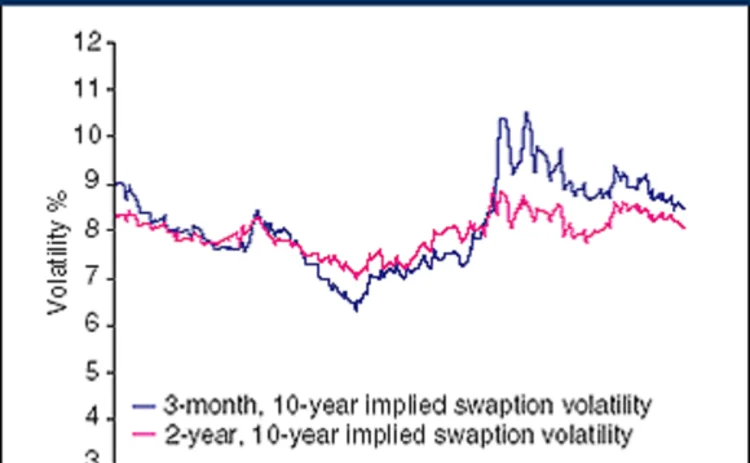
How to survive a mortgage meltdown
Interest rate volatility has left some US mortgage lenders reeling, and it’s dynamic hedging of loan books with swaps that is to blame. By embracing options more, as US mortgage bank Countrywide Financial did, they could have fared much better.

Risk managers at many US mortgage banks are in a tailspin. Six months ago, all appeared to be going well, as gains on their interest rate hedge books added to strong profits from mortgage lending. Receiving fixed rates of interest from swaps was a profitable strategy in a low interest rate environment. Then, in June, the good times came to an end.
Fixed-income markets experienced an unprecedented
Only users who have a paid subscription or are part of a corporate subscription are able to print or copy content.
To access these options, along with all other subscription benefits, please contact info@risk.net or view our subscription options here: http://subscriptions.risk.net/subscribe
You are currently unable to print this content. Please contact info@risk.net to find out more.
You are currently unable to copy this content. Please contact info@risk.net to find out more.
Copyright Infopro Digital Limited. All rights reserved.
As outlined in our terms and conditions, https://www.infopro-digital.com/terms-and-conditions/subscriptions/ (point 2.4), printing is limited to a single copy.
If you would like to purchase additional rights please email info@risk.net
Copyright Infopro Digital Limited. All rights reserved.
You may share this content using our article tools. As outlined in our terms and conditions, https://www.infopro-digital.com/terms-and-conditions/subscriptions/ (clause 2.4), an Authorised User may only make one copy of the materials for their own personal use. You must also comply with the restrictions in clause 2.5.
If you would like to purchase additional rights please email info@risk.net
More on Markets
Does crypto really need T+0 for everything?
Instant settlement brings its own risks but doesn’t need to be the default, writes BridgePort’s Soriano
Asset managers prep autocall ETFs with assets tipped to hit $30bn
Actively managed strategies wait in the wings after systematic approach nets Calamos $500m
US insurers turn to short-dated FX forwards as notionals rise
Counterparty Radar: Trades under three months make up nearly 60% of total positions, up from just a third in 2022
Citi launches core inflation QIS
Custom indexes eliminate energy and food prices to ease trading of stickier inflation trends
Analysts dismiss BDC credit quality concerns
Growing private credit worries helped drive losses, but fundamentals are said not to support that view
October’s crash shows crypto has come of age
Ability to absorb $19bn liquidation event marks a turning point in market’s maturity, says LMAX Group's Jenna Wright
From inertia to acceleration: scaling tri-party VM and collateral reuse
Catalysing network effects and expanding non-cash VM at scale
FX swaps price discovery challenges buy side, says Vanguard
Lack of transparent price validation data for FX forwards and swaps is holding back buy side, Vanguard’s head of FX says







